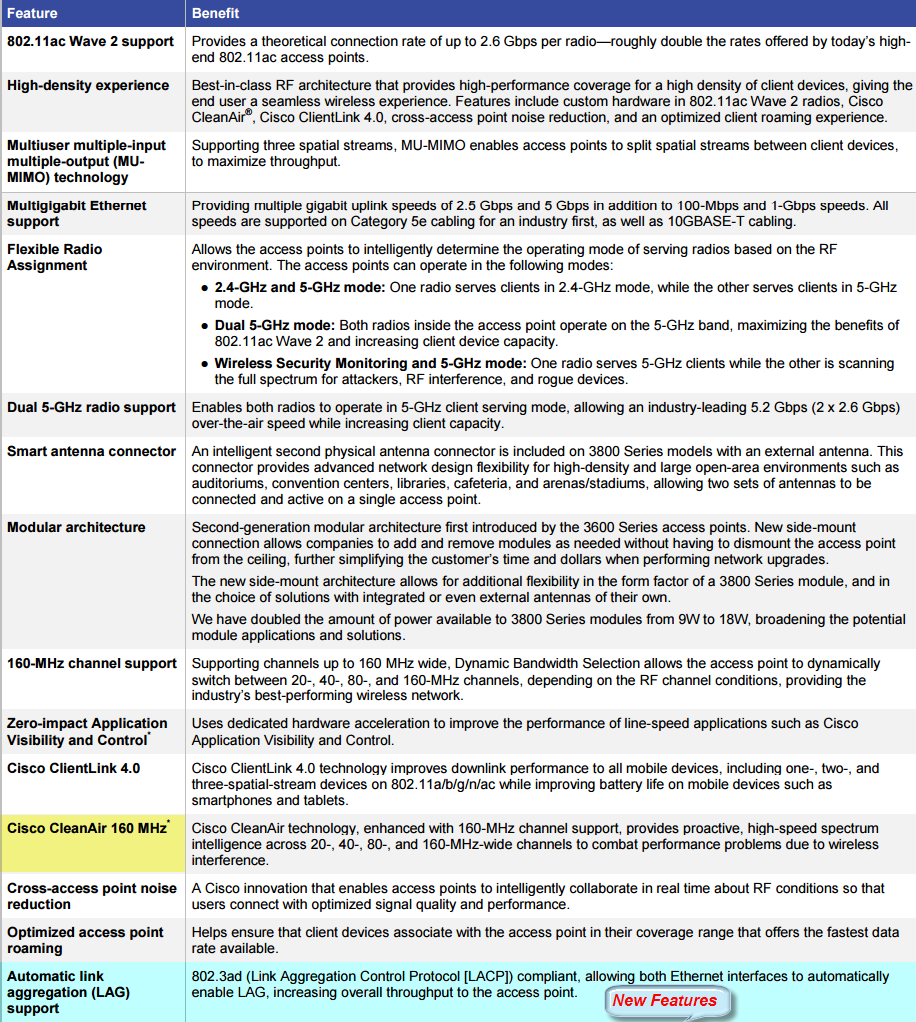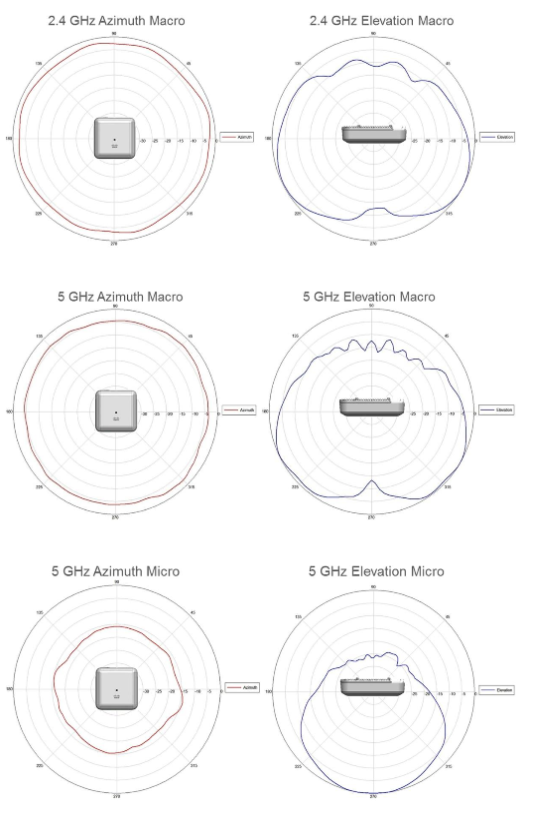
Cisco updated the features of the Aironet 3800 Series Wi-Fi access points. We know that the Cisco Aironet 3800 Series is the perfect solution for organizations paving the way for the new 802.11ac Wave 2 standard. And for large enterprise organizations that rely on Wi-Fi to engage with customers, the 3800 Series is a hands-off product that’s intelligent enough to make decisions based on end-device activities and usage.
What are the new features of Cisco Aironet 3800 Series Access Points? Let’s read the newest updated datasheet of Aironet 3800 Series.
Cisco Aironet 3800-Features and Benefits
802.11ac Wave 2 and Beyond
The Aironet 3800 Series extends 802.11ac speed and features to a new generation of smartphones, tablets, and high-performance laptops, providing a greater end-user experience. Whether your project involves wholesale changes to your current wireless network or upgrading your legacy Wi-Fi deployments (802.11a/b/g/n/ac Wave 1 deployments), the Aironet 3800 Series can handle the job.
The Aironet 3800 Series supports 802.11ac Wave 2, providing a theoretical connection rate of up to 5.2 Gbps—that’s roughly four times the rate offered by today’s high-end 802.11ac access points. The boost helps you stay ahead of the performance and bandwidth expectations of today’s mobile worker, who usually uses multiple Wi-Fi devices instead of just one. As such, users are adding proportionally larger traffic loads to the wireless LAN, which has outpaced Ethernet as the default enterprise access network.
High-Density Experience
Building on the Cisco Aironet heritage of RF excellence, the Cisco Aironet 3800 Series Access Points run on a purpose-built, innovative chipset with a best-in-class RF architecture. This chipset provides a high-density experience for enterprise networks designed for mission-critical, high-performance applications. The 3800 Series is part of Cisco’s flagship portfolio of 802.11ac-enabled access points, delivering a robust mobility experience. It features 802.11ac Wave 2 with 4×4 MU-MIMO technology supporting three spatial streams. MU-MIMO enables access points to split spatial streams between client devices, to maximize throughput.
With two radios built into each access point, the Aironet 3800 Series is more versatile than any access point currently on the market. These radios are outfitted with Flexible Radio Assignment, which means that the access points automatically self-optimize to better serve the environment. For example, one of the radios broadcasts its signal on the 5-GHz channel and the other sends out a 2.4-GHz signal. The access point understands the wireless environment and will automatically switch the 2.4-GHz signal to a 5-GHz signal, increasing the reliability of your customers’ Wi-Fi use. This setting automatically works in reverse too: the access point can recognize that the RF environment has changed and revert back to its original configuration.
The 3800 Series also dynamically changes the radio settings based on the wireless environment. The access point will allow one of the radios to operate in Wireless- Security Monitoring mode, allowing you to detect wireless security threats and interference and combat rogue access. This valuable information can be culled in an easy-to-understand matrix to inform you about your wireless users.
Flexible Radio Assignment also allows you to convert a radio into Wireless Service Assurance mode, providing proactive health monitoring of the network.
- Optimized access point roaming helps ensure that client devices associate with the access point in their coverage range that offers the fastest data rate available.
- Cisco ClientLink 4.0 improves downlink performance to all mobile devices, including one-, two-, and three-spatial-stream devices on 802.11a/b/g/n/ac. At the same time, the technology improves battery life on mobile devices.
- Cisco CleanAir is technology enhanced with 160-MHz channel support. It delivers proactive, high-speed spectrum intelligence across 20-, 40-, and 80-, and 160-MHz-wide channels to combat performance problems due to wireless interference.
- MIMO equalization capabilities optimize uplink performance and reliability by reducing the impact of signal fade.
Modular Architecture
The 3800 Series carries forward the modular architecture first introduced with the Aironet 3600 Series, providing unparalleled investment protection for forward-looking modular solutions. The 3800 Series delivers an enhanced second-generation modular architecture by:
● Moving the module connection from the bottom to the side of the access point. This allows for easier addition and removal of a module without having to dismount the access point and also allows for flexibility in module design with respect to size and appropriate antenna placement.
● Increasing the power available to a module to 18W, providing additional flexibility for future module solutions.
As wireless LAN continues to grow as the dominant method of connecting to private and public networks, the access point becomes a perfect integration point into an enterprise corporate network or carrier service network for a wide variety of solutions. Companies can use a single Ethernet cable drop from their wired network to provide high-speed network access and also typically for Power over Ethernet (PoE) to the access point and solutions that are integrated with and interconnected through the 3800 Series access points.
More updates, such as the main specifications (including the decode of part numbers, integrated antenna, data rates supported, transmit power and receive sensitivity, etc.) https://www.cisco.com/c/en/us/products/collateral/wireless/aironet-3800-series-access-points/datasheet-c78-736498.html
More Related
Cisco Aironet 3800 Series APs, Flexible Radio Assignment Here
Cisco Aironet 3800, the Newest Best-in-Class Access Point
Cisco Aironet 2800 and 3800 APs, Keep Your Connected World Spinning




